
Exploring Iceland's F Roads: A Comprehensive Overview
Jump to chapter
If you want to find Iceland’s hidden gems, chances are you are going to drive on Iceland's F-Roads to get to them. These roads are also known as Iceland’s mountain routes. They are known to be relatively rough and can involve gravel tracks and sometimes crossing rivers. Due to the intense terrain, they are only accessible by a 4x4 vehicle.
We are going to go over everything you need to know about F-Roads and what vehicle is going to be most suitable to conquer them. We understand they can seem quite intimidating at first glance, but don’t worry we can help you navigate them! This is our F-Road guide for beginners.
What is an F-road?
Let’s start with the basics. Simply put, an F-Road is a mountain road that is normally on dirt or gravel tracks. The “F” in F-Road comes from the word "Fjall", which means mountain in Icelandic. They are only normally open during the summer months due to the mountainous terrain. When the snow begins to fall, most of the roads become inaccessible.
What are the speeds on F-roads?
This depends on the quality of the road. You will find that some F-roads will have speed limits of 50 MPH or 80 KPM. Others will have a very slow pace due to the rocky terrain. You may have to go over large boulders, drive on sand, and even cross a flowing river. You can expect big potholes that you may need to drive around or go extremely slow over too.
All of these crazy yet exciting roads will bring you to some captivating destinations. This could include hidden hot springs or waterfalls nestled in Iceland’s lesser-known areas. Which is the main reason why we think driving F-roads is completely worth it.
Where are F-Roads in Iceland?
There is a map of F-roads that you can study before you begin your Iceland road trip. That way you can be prepared and know what to expect. We recommended researching where gas stations are along your route and filling up ahead of time. A lot of F-roads have no shops or gas stations in sight for miles and miles.
As you can see from the map, F-roads are located throughout the country. They are most common in the middle of the country, also known as the Icelandic Highlands. The Highlands of Iceland is located on an inhabited plateau of 15,445 square miles that covers most of the center of Iceland.
In addition to the map, you should always check the condition and opening of Mountain Roads on www.road.is.
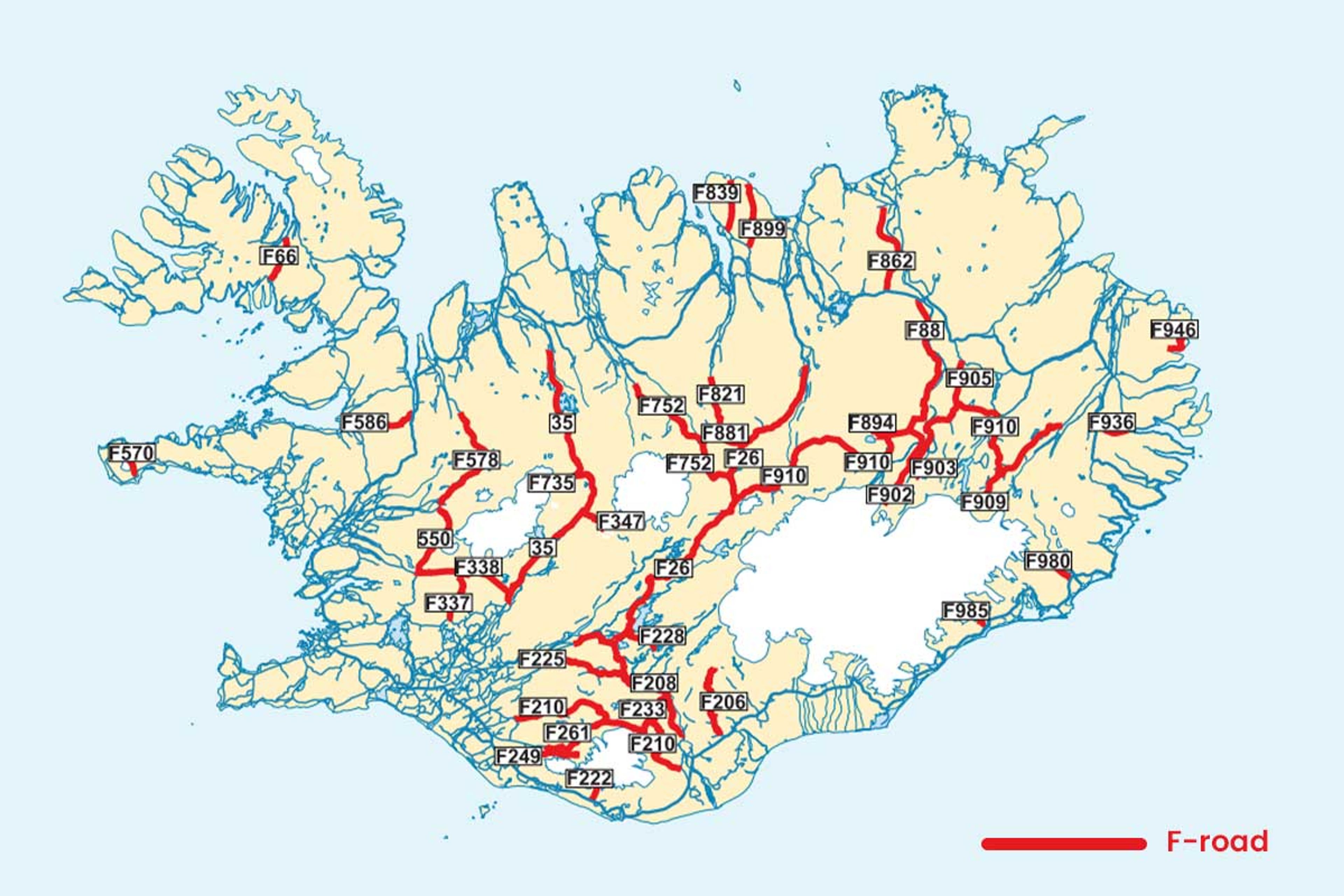
Are there different types of F-Roads?
Yes, there are! They are normally rated as Easy, Medium, and Difficult.
Easy F-Roads involve no river crossing and are normally on a moderate gravel road. While there may be some larger rocks, you will not be downright bouldering. These roads are perfect for beginners driving 4x4 Vehicles.
Medium F-Roads are known to be a bit more challenging. Mostly due to larger rocky sections and moderate river one-foot river crossing. They are not insanely hard but we do recommend giving the Easy F-Roads a try first.
Difficult F-Roads are just that, difficult. The roads will involve driving over boulders and crossing through faster-flowing rivers. Which can be anywhere from one to three feet deep. You will need a high-clearance vehicle to access these harder F-Roads. We also recommend that you are comfortable with driving on F-Roads at this point.
If there is a certain destination you are planning to visit that involves an F-Road, be sure to speak to one of our specialists. They will be able to tell you exactly what vehicle you will need to access it.
Can I cross rivers on F-Roads?
As long as you have the right vehicle, you can cross rivers on F-Roads. However, you do need to use some common sense when doing so. Sometimes rivers can be dangerous to cross, here are some signs you should look for.
You need to pay attention to the depth, width, and speed of the river. If you are traveling on the F-road after heavy rainfall, the river will be faster and deeper. This would not be an ideal time to attempt the crossing, since the strong current could take the vehicle with it. This could also happen after a very sunny day due to the glaciers melting.
Dacia Duster crossing a river on F-road.
We recommended attempting river crossing on dry days where there was no heavy rainfall the day before or predicted on the day you are traveling. Also, be sure to check Iceland’s Weather Forecast before adventuring on F-Roads.
If the water of the river is higher than more than half of your tire, do not cross. If it looks higher than most of your tires, it is recommended to just turn around. The car could get completely stuck or significantly damaged. It is best to avoid you and your vehicle being in any danger.
Do I need special insurance to drive F-Roads?
At Go Car Rental Iceland insurance is still valid if you drive on F-Roads. The only area where there is no possible insurance at all is when crossing rivers.
Go Car Rental includes a Collision Damage Waiver with your rental. The rental charge includes statutory motor vehicle insurance and third-party liability. Insurance and accident insurance for the driver and owners. Such a policy shall specify the deductible for each loss occurrence. With this insurance, self-risk/deductible equals the amount of 3.500 EUR.
Super Collision Damage Waiver is also included. It is additional non-mandatory insurance that reduces the self-risk/deductible from 3.500 EUR down to 875 EUR in case of damages to the vehicle.
Sand and Ash Protection is not included but heavily recommended when driving on F-Roads.
This insurance will cover possible damages caused by sand and/or ash storms. These kinds of storms can cause considerable damage to the whole car including the paint, windows, and lights. Without this insurance, self-risk/deductible is unlimited.
Gravel Protection is also included and is necessary due to the gravel on F-Roads. This insurance will cover damages from gravel roads to windshields and headlights. Without this insurance, self-risk/deductible equals the amount of 500 EUR but with the insurance, you don't need to pay anything for gravel damages.
You can also purchase ZERO Excess Insurance, which reduces the self-risk/deductible amount for any damage covered by our insurance to zero.
Do you need a 4x4 Vehicle To Drive F-Roads?
Yes, you do and it is illegal to not have one. You are not allowed to drive F-roads in a 2-wheel drive car or a 4WD passenger car. If you attempt them in a 2wd rental car you will not be insured while driving on F-roads and you will be liable for fines and costs of repairing any damage to the chassis of the rental car. In addition to no coverage, you will also be in breach of Icelandic traffic law, resulting in a fine.
Even if you do not plan on driving an F-Road, you could change your mind during your Road Trip. It is best to save yourself some stress and rent a vehicle that is allowed on F-roads. Which we are going to go over now.
Best Vehicles For F-Roads
Dacia Duster
The Dacia Duster is one of our most popular rental cars. It can comfortably fit up to four people but it is also perfect for two. The 411 liters of luggage space provides plenty of room for suitcases and camping supplies.
The car is fuel efficient which is another reason it is a traveler's favorite. With Iceland’s gas prices being relatively high compared to other countries, the Duster is a fantastic cost-saving option.
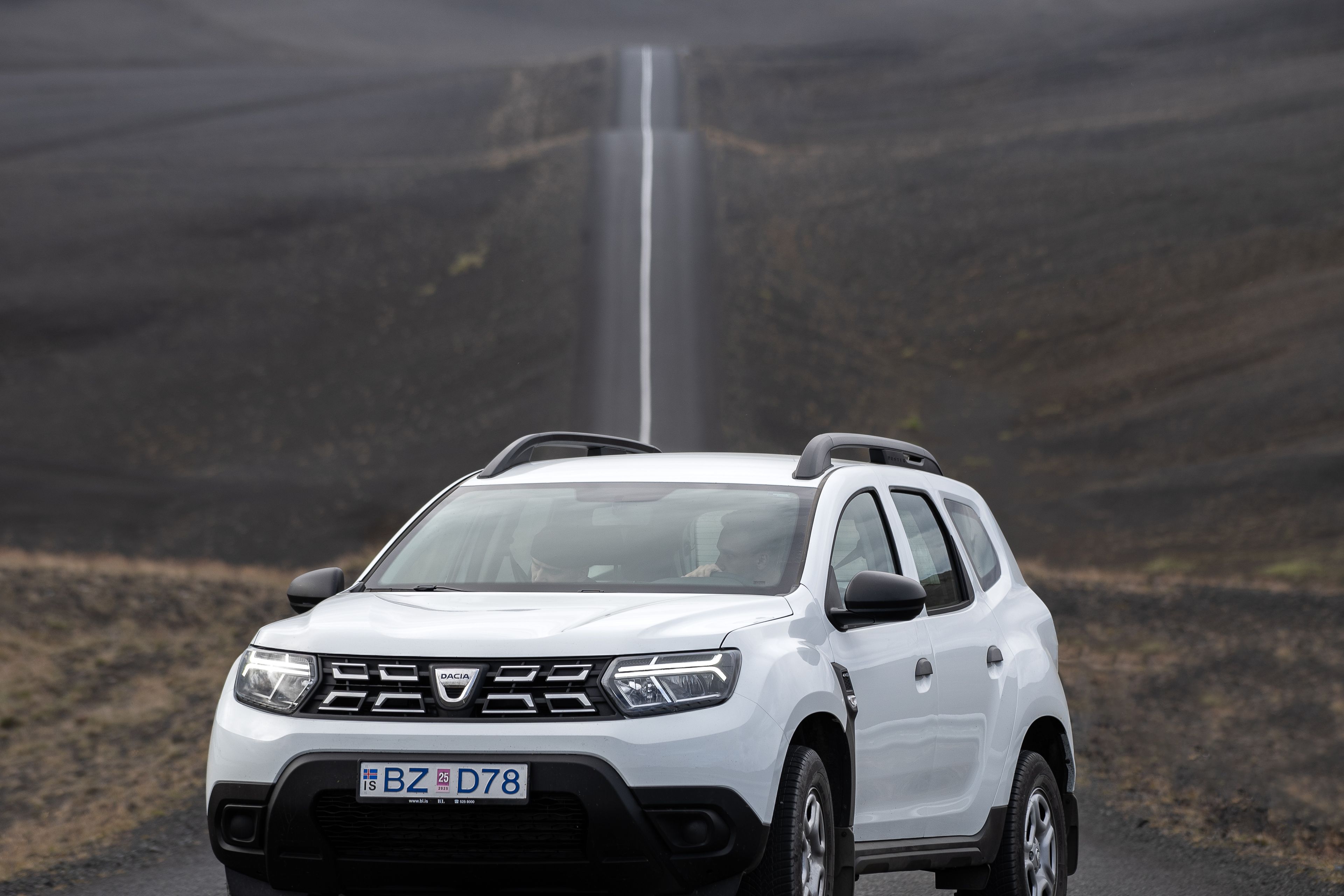
Suzuki Jimny
The Suzuki Jimny is equipped with a new and more powerful 1500cc engine that can produce 102hp, generating that extra bit of torque when you need it to tame Iceland’s terrain and F-Roads.
Suzuki Jimny fits two people and has a good amount of luggage space, 85 liters / 377 liters / 830 liters. It is great on gas as well with a fuel range of 500k or a little over 300 miles.
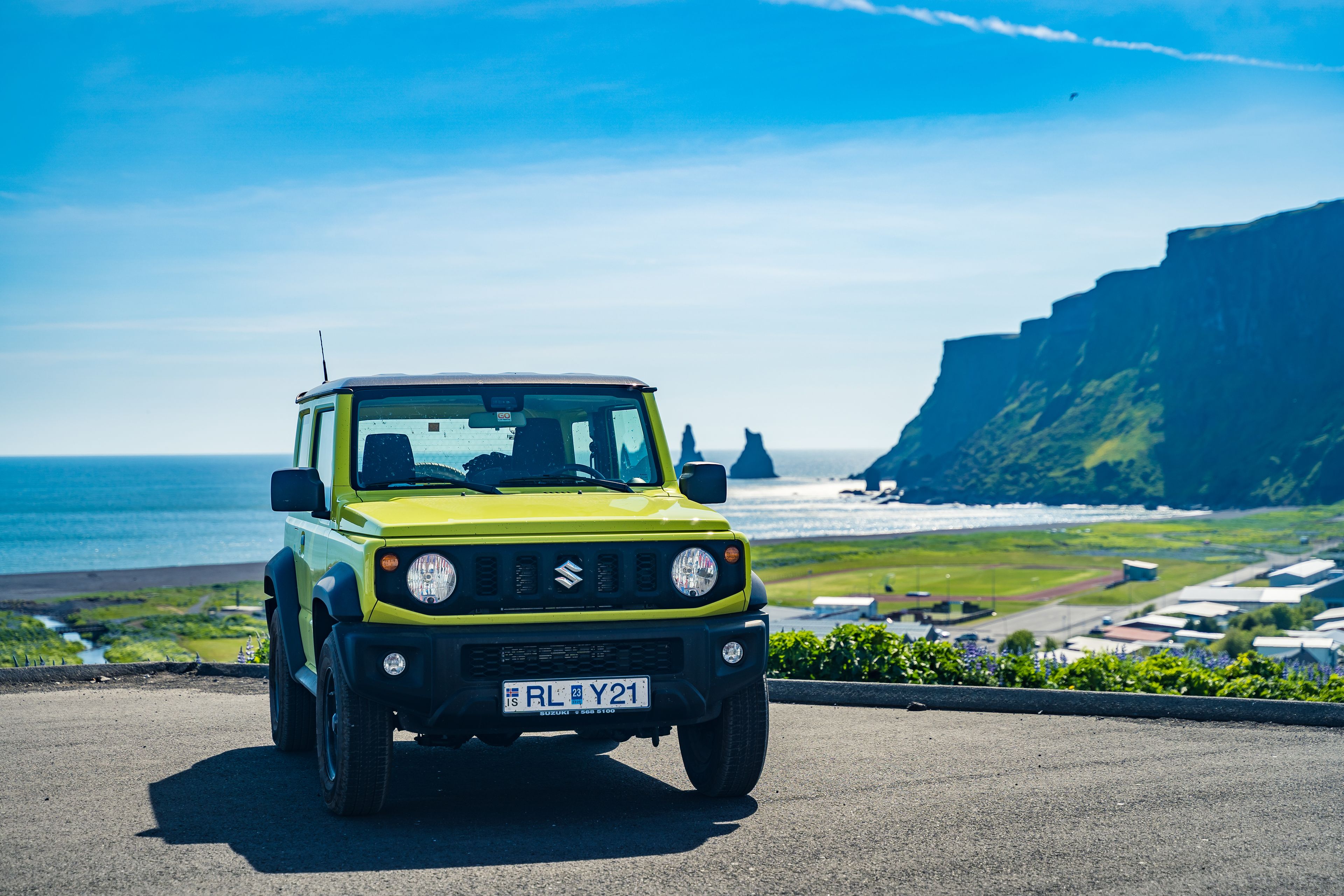
Land Rover Defender
The Land Rover Defender is where luxury and adventure meet. All with a pristine 4-wheel drive system that offers different modes for each terrain to overcome. Which is why it is one of our top picks for F-Road driving.
There is also plenty of room for usage with a luggage space of 916 liters or 32 cubic feet. The fuel consumption is 6,5 liters per 100km with a fuel Tank size of 90 Liters / 24 gallons.

Jeep Wrangler Rubicon
The Jeep Wrangler Rubicon is an adventurer's dream. This is hands down the best car to explore F-Roads in the Icelandic Highlands. It is arguably the best rental car to drive around Iceland and all the possible F-roads you'd like to visit.
The car comes with a great 4x4 high and low range and it has a 375 horsepower petrol engine supported by an electric motor. This amazing 4x4 rental car comes with a Built-in GPS, heated seats, 4x4 Hi and Low ratio, and many more features. It is perfect for climbing over a large boulder or for crossing rivers due to its high clearance.
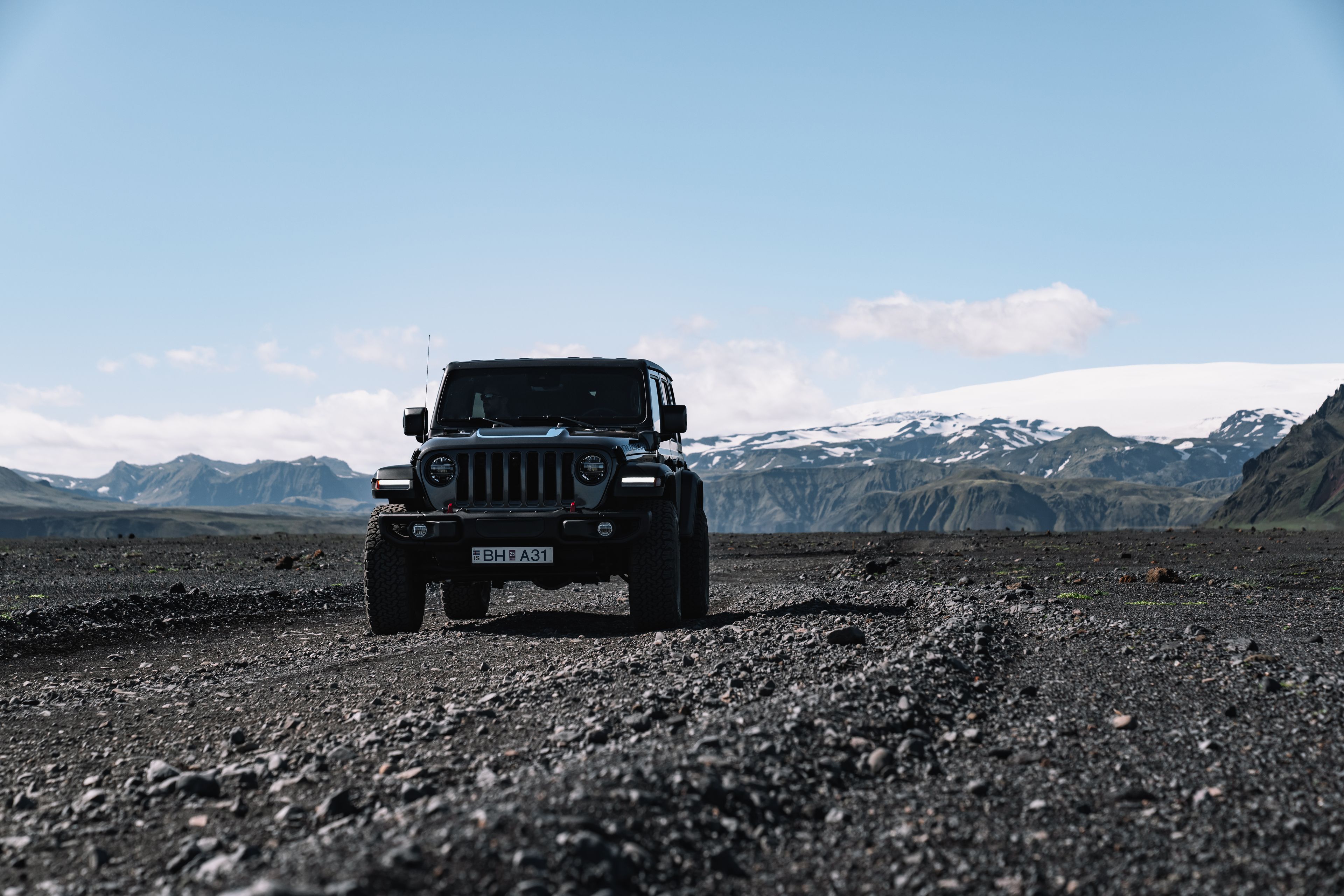
Breathtaking Locations Accessible by F-Roads
There are so many beautiful locations in the Icelandic Highlands that can only be accessed by F-Roads. We picked a few of our favorites that you can safely discover in one of our F-Road-approved vehicles.
Landmannalaugar
Landmannalaugar or the 'People's Pools', is a location in Iceland's Fjallabak Nature Reserve in the Highlands. You will drive through colorful rhyolite mountains and vast lava fields. This is in addition to the amazing hot springs in the area.
You can take a beautiful hike here while taking pictures of the bright-colored mountains. After, soak yourself in one of the natural geothermal pools. The easiest and most popular way to get there is by taking road F208 from the north.

Maelifell Volcano
Mælifell is a 2595-foot volcano that stands out in a desert of striking black sand. It was once hidden under the Mýrdalsjökull glacier which is the third-largest glacier in the country. It then became revealed when the glacier withdrew at the end of the last Ice Age which was about 10,000 years ago.
Today you can visit it by taking Route F210, which involves a river crossing. The road is known to be very bumpy and can take around three hours to drive. Seeing the Volcano in person is absolutely worth the drive!
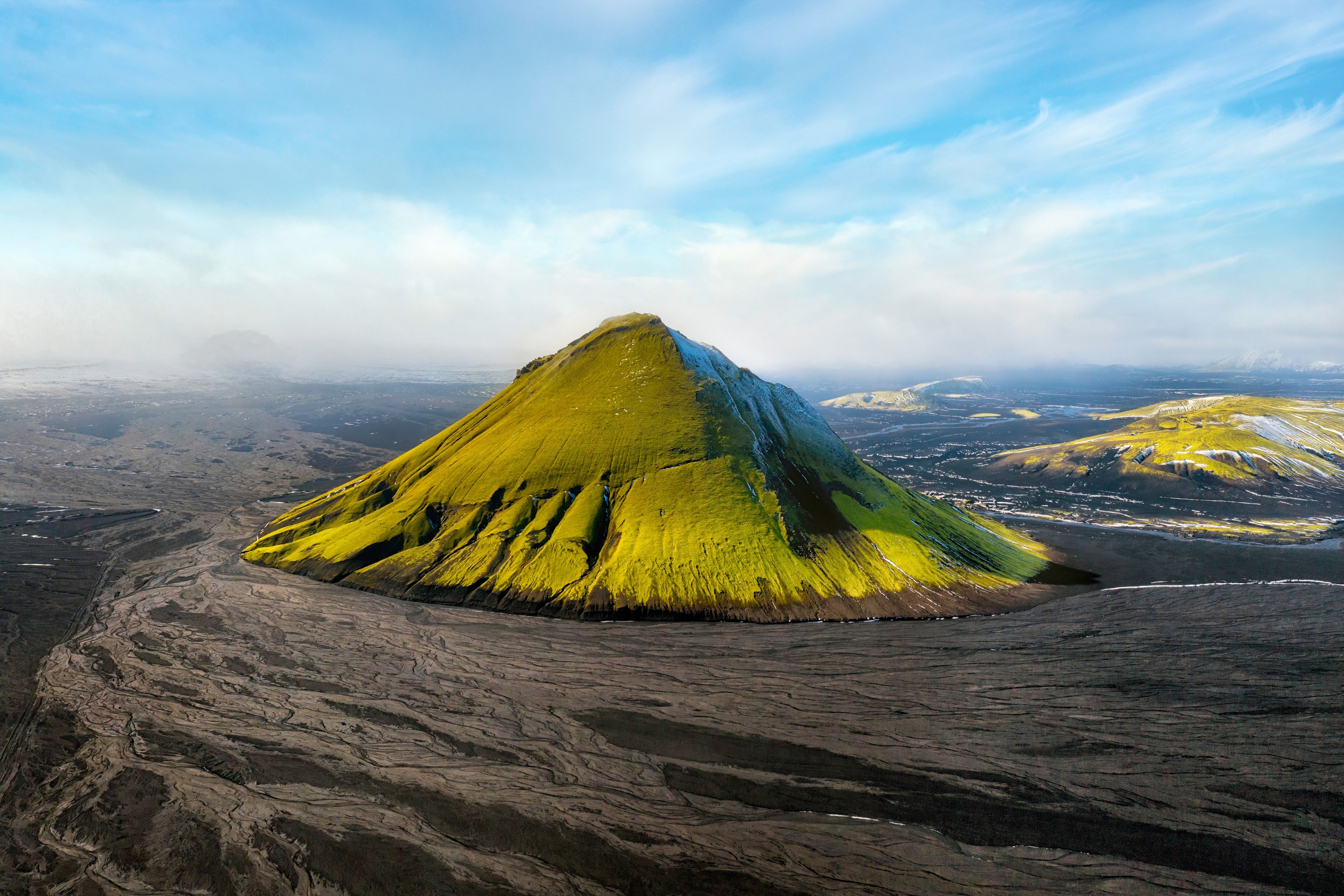
Askja
Located in the humongous Vatnajökull National Park is Askja. This active volcano is located in the Northern part of the National Park. It is surrounded by crater lakes and lava fields. One of the lakes is Öskjuvatn, which has a depth of 720 feet.
There is also the Viti Crater. These lakes were formed from volcanic eruptions which created the crater floor. Your driving adventure on F905 to Askja will blow your mind, thanks to its incredible views.
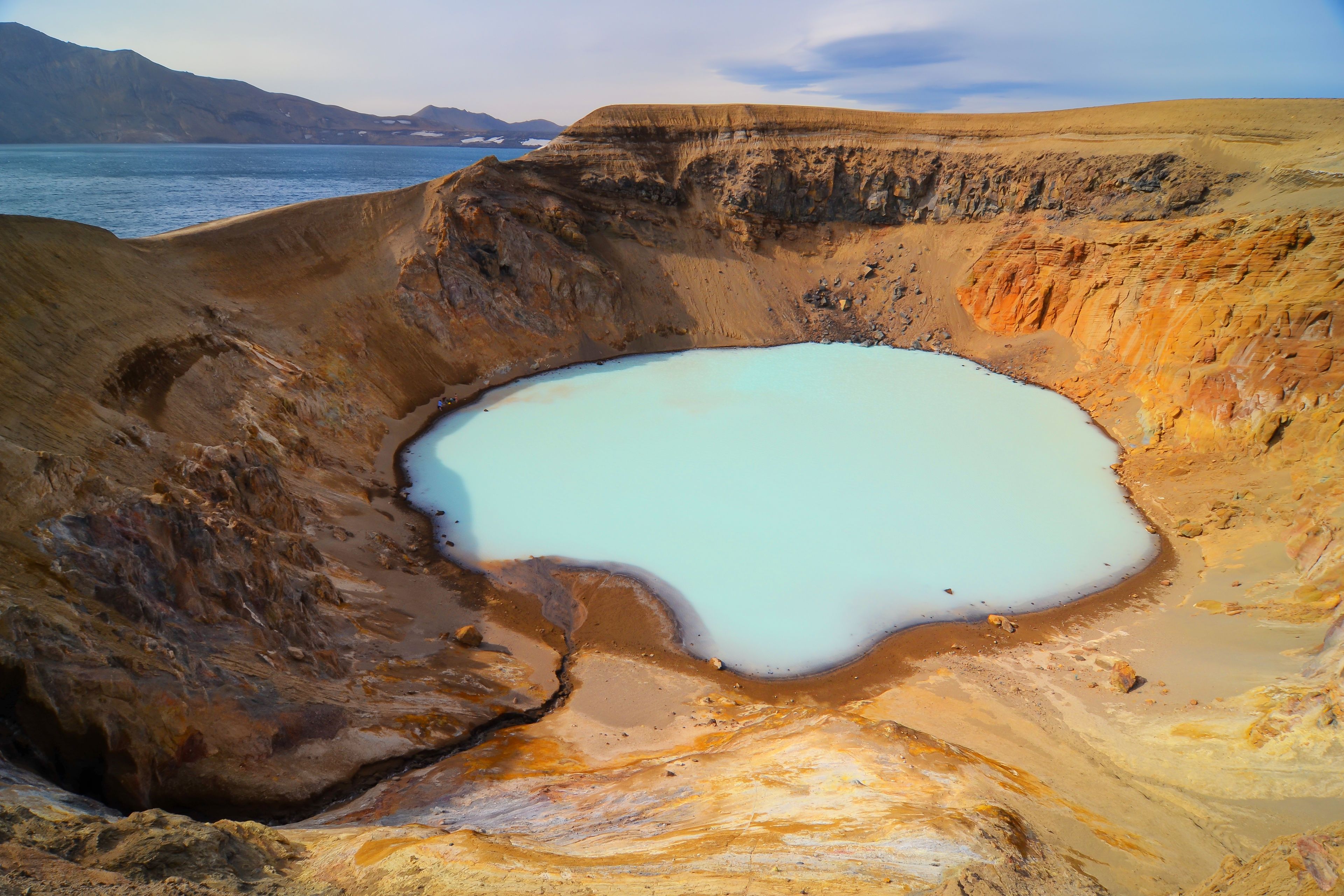
Latest Blog Posts
 Canyons
CanyonsÁsbyrgi Canyon in Iceland: A Horseshoe-Shaped Wonder
Tucked away in northeast Iceland sits Ásbyrgi Canyon, a natural wonder that looks like it jumped out of a fantasy book. When I visited in 2023, my friends and I had the place almost to ourselves – just us and one other family exploring this huge horseshoe-shaped canyon. After a short 20-minute walk, we reached a peaceful pond nestled at the base of tall cliffs. It was quiet. Surprisingly quiet. If you're planning an Iceland trip and want to escape the crowds while seeing something truly special, Ásbyrgi Canyon should be on your list. Let's dive into everything you need to know about this hidden gem.
 Volcanoes
VolcanoesAskja: Iceland’s Remote Volcanic Wonderland
If you're the kind of traveler who loves a bit of adventure, Askja should be on your radar. This rugged, otherworldly volcanic caldera is about as remote as it gets in Iceland. No tourist crowds, no paved roads, just raw nature, steaming craters, and eerie, moon-like landscapes. Sounds epic, right? Well, it is. But getting there is no small feat. You’ll need a proper 4x4, some serious road trip spirit, and a good sense of adventure. But trust me, it’s worth it. If you’ve ever wanted to feel like you’re exploring another planet, this is the place to go.
 Rental Cars
Rental Cars15 Hidden Gems in Iceland You Can't Miss
Sure, everyone knows about the Blue Lagoon, Skógafoss, and the glitzy cafes of Reykjavik, but here’s the thing: Iceland’s best treasures aren’t always the ones all over Instagram because the real magic lies in the tucked-away spots that most tourists don’t think of. Think hidden waterfalls, epic canyons, and places where you don’t need to elbow people out of the way for a decent photo! These 15 gems take you off the beaten path and show you a more untouched side of Iceland, where every turn feels like your own little discovery.